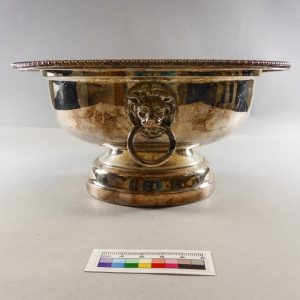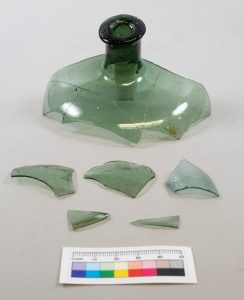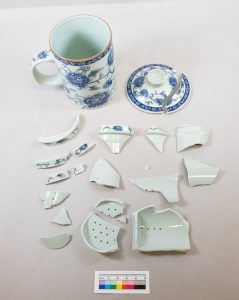First Year Reflection

As we move into the summer and are now dealing with our more complex, composite objects, I have been reflecting on the first year of the course and its application as we move into the role of conservators who are fully responsible for the fate of our objects (a role that can’t be taken lightly!).

One of the things that attracted me to this course was that, alongside lecture and theory courses, we started off with practical conservation work on the first week, which was quite exciting. We began by cleaning copper alloy objects from the Roman fort excavation at Binchester (on which I did a previous blog post that you can find <a href=”https://sites.durham.ac.uk/duct-tape/2018/12/07/copper-alloy-conservation/”>here</a>).

While the technique was relatively simple (a solvent and detergent solution and gentle swabbing combined with mechanical corrosion removal), it allowed us to develop important hand skills as well as our judgement when it comes to the decision of ‘how far to go’ in cleaning. Any and all cleaning is damaging to the object by definition, so it was essential to begin discovering where to draw that line and get experience in making the judgement call in how much and what type of cleaning an object can tolerate in an instructional environment. The responsibility of cleaning actual objects so early on taught both a respect and cautious attitude to carry on with the later practical work.

From copper alloy, we then moved on to other metals, including silver. My major silver project was a historic posy bowl from Durham castle. During the conservation of this object, I experimented both with different gentle abrasive techniques and solvent cleaning. I was also able to get experience in coating a historic metal with wax and all the intricacies in ensuring an even coating, which will come in especially handy for one of my summer objects.

After metals, we explored other inorganic objects, including glass, pieces of plaster wall paintings, and ceramics. Not only did we get to experiment with other cleaning methods, but got practice also in taking down old adhesive joins which had failed for many reasons, and putting objects back together. My two largest projects from this unit were a partial glass vessel from Dibsi Faraj and a historic ceramic tea strainer set. Each of these had its own challenges and rewards, and I enjoyed getting practice in reassembly.

From inorganics, the last major category covered in our skills course was organic objects. This encompasses a huge number of items, from textiles to leather to bone to composite objects. We got practical experience with waterlogged objects (wood and leather), but my last and biggest project of the term was also my favorite – a small taxidermy bird from the Oriental Museum. This object had many condition issues to be assessed during conservation, and it was a perfect segue into the more complicated objects of the next summer term.

One of my favorite parts of the skills course that luckily has already continued is the ability to learn from others in the cohort. With so many different objects being treated at the same time, we are all able to ask each other questions and observe different processes, and ask each other what did or didn’t work in a particular context. So even if I didn’t work with a material on the skills course, I at least had a starting point for many of them by absorbing information and techniques from peers.

As you can see, by the time we receive our objects for the summer term we’ve already got quite a few under our belts! After conserving so many objects during the first few months of the course, it may seem strange that we are only assigned four for the next term. However, these objects are far more complex and have equally complex ethical considerations, as LiuYi’s post illuminated. I’ve got some real contenders to work with over the summer and am very excited to apply my knowledge and experience from the course so far with research and experimentation to ensure the best conservation for the objects.
Lauren
